The gunner's pedals
The Tiger's turret was rotated by the engine via a hydraulic gearbox on the turret floor. The gunner controlled the gearbox with pedals, then made fine adjustments manually with a handwheel.
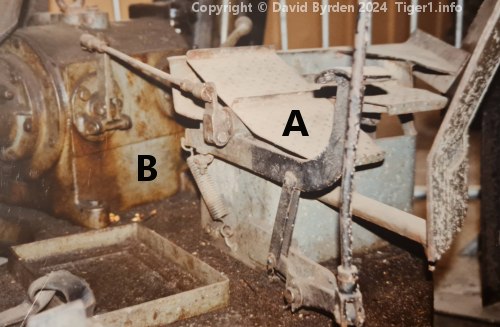
Here is the forward left area of a Tiger's turret floor [3] . This turret has been removed from its tank for future restoration at the Tank Museum. The gunner's pedals are part of a complex assembly labelled [A]. The pedals control the hydraulic gearbox at [B] via a linkage rod. This museum example is fully intact.
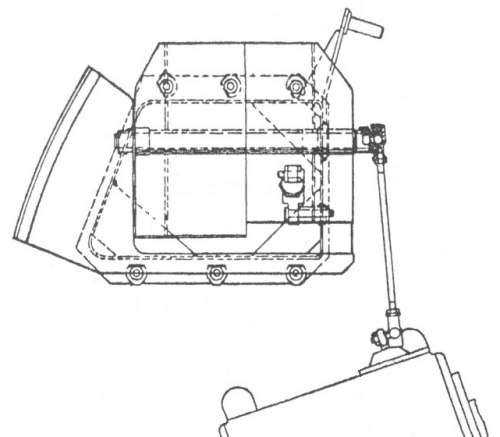
This is a plan view of the pedal assembly [2, see Bild 41] . It does not face directly forwards in the tank, but is turned about 18 degrees to the right. The gearbox is at the bottom of the image. The pedals are mounted on an axle, running left to right, that has an arm for the linkage rod at its end.
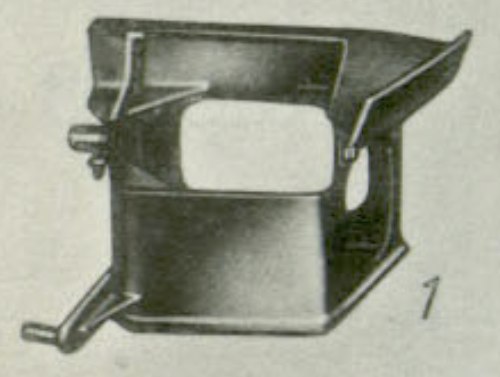
This is the hollow framework on which the parts are mounted. It weights 8.7kg. [5, see Tafel 98]
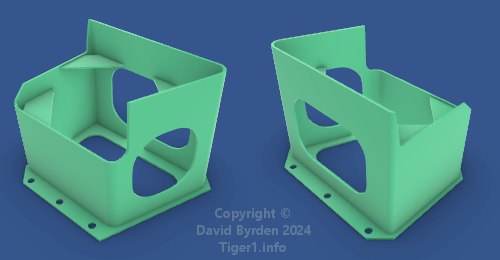
I am building a model of it. The base is a simple shell with a flange for attachment to the turret floor.
The first version
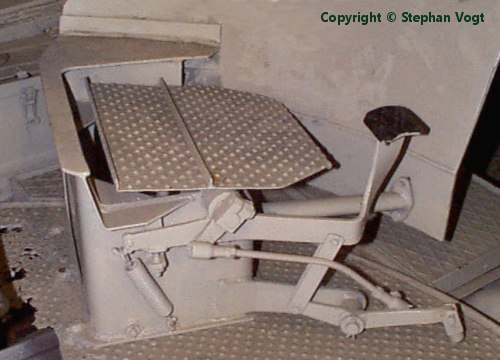
In its original version, as you can see here, there was just a single large pedal. The gunner should press it forward to turn left and backward to turn right. A spring arm inside the frame would return the pedal to the neutral position. This museum example is somewhat damaged and has been painted white.
Besides the main pedal that rotates the turret, there is a secondary pedal, painted black here, that operates the coaxial MG. Its arm is mounted loose on the same axle as the main pedal.
On the far side of the frame, a flange and a tubular arm support the curved shield that protects the gunner's legs.
Two pedals
There were complaints that the single large pedal was not easy to operate. In particular, it was difficult to control in the reverse direction because too much was asked of the human foot. Rather than design a new pedal system, the designers made a simple change.
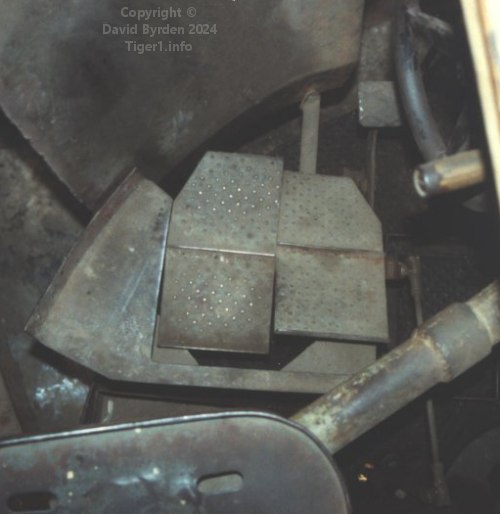
As this photo shows, they split the single pedal into two [4, see 3.4.2.12] . This photo is the gunner's view of his pedals. His seat (missing its cushion) is visible at the bottom of the photo. He must sit in a cramped, twisted position.
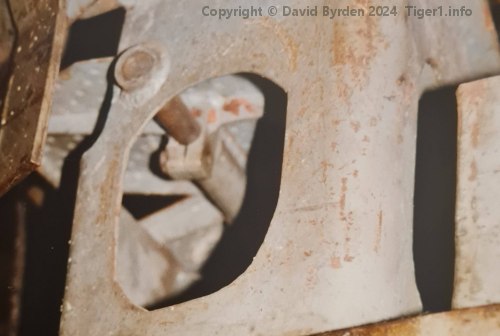
We are peering into the pedal unit from below. The left-hand pedal is firmly attached to the rotating shaft, just like the original large pedal was.
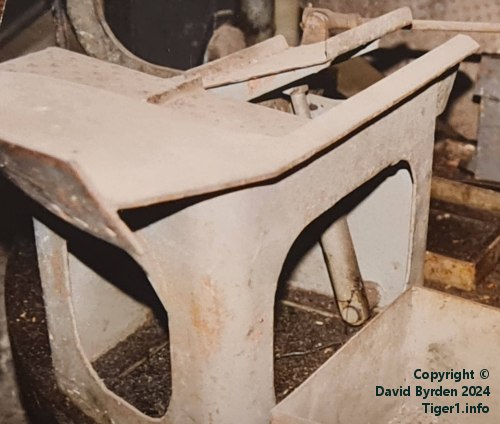
But the right-hand pedal is mounted on a frictional bearing. It can move relative to the shaft if there is resistance, but it can move the shaft if not. The spring arm is still present, now adjusted to return the right-hand pedal to a forward position.
I do not fully understand the workings of the system, but to turn left, you would press the left-hand pedal forwards as before. To turn right, you would press the right-hand pedal backwards, which was comfortable because it was already tilted forward. You can watch the operation of the pedals on video.
A hand lever
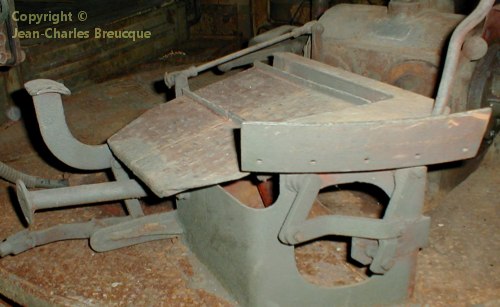
Later, a third version of the pedal assembly was created; but I have seen no documentation about it and I have little idea when it was introduced. This example exists in the Saumur Museum Tiger, whose turret apparently dates from February 1944 [1] .
The system has been modified by the addition of a lever, at top right of the photo, for the gunner to operate by hand. It's not clear exactly what it can do, but it's geared to rotate the axle that the pedals are mounted on. Perhaps the pedals were never satisfactory so this lever was an alternative to them.
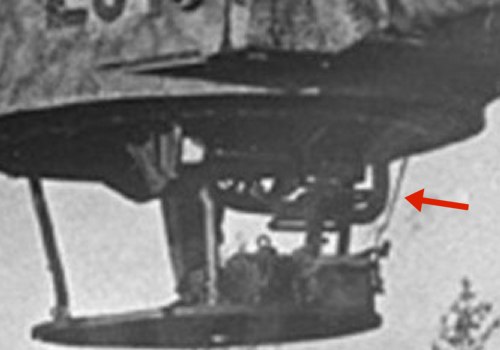
We can see the lever (arrowed) in this "Mid" Tiger turret. The loader's hatch, which is visible in the uncropped photo, has a central locking disc. Therefore the lever already existed in September 1943.
[1] Survey of vehicle 251114, at Saumur, by Jean-Charles Breucque
[3] Survey of Tiger 250122, at Bovington museum, by David Byrden
[4] Germany's Tiger Tanks, volume 1 : DW to Tiger 1
[5] Kraftfahrgerät teil 3, Fahrgestell und Turm Panzerkampfwagen "Tiger", heft 60